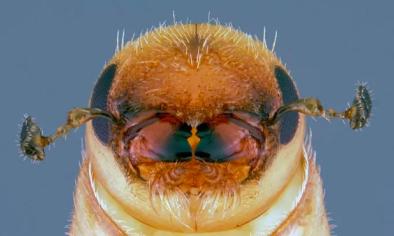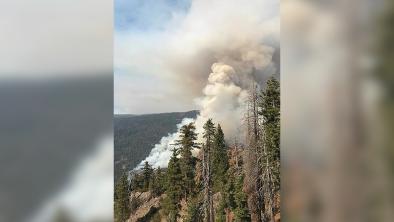Science Source
Spatio-temporal impact of climate change on the activity and voltinism of the spruce bark beetle, Ips typographus
- Uses a model describing the temperature-dependent thresholds for swarming activity and temperature requirement for development from egg to adult and drives it by transient regional climate scenario data for Sweden, covering the period of 1961–2100 for three future climate change scenarios (SRES A2, A1B and B2)
- Finds that during the 20th century, the weather supported the production of one bark beetle generation per year, except in the north-western mountainous parts of Sweden where the climate conditions were too harsh
- Finds a warmer climate may sustain a viable population also in the mountainous part; however, the distributional range of I. typographusmay be restricted by the migration speed of Norway spruce
- Modelling suggests that an earlier timing of spring swarming and fulfilled development of the first generation will significantly increase the frequency of summer swarming
- Model calculations suggest that the spruce bark beetle will be able to initiate a second generation in South Sweden during 50% of the years around the mid century
- Finds that, by the end of the century, when temperatures during the bark beetle activity period are projected to have increased by 2.4–3.8 °C, a second generation will be initiated in South Sweden in 63–81% of the years
- Predicts there will be one to two generations per year during the next decades in response to temperature, and the northern distribution limit for the second generation will vary
- Addresses questions applicable to sustainable forest management, suggesting that adequate countermeasures require monitoring of regional differences in timing of swarming and development of I. typographus, and planning of control operations during summer periods with large populations of bark beetles
Related Content
Headline

Jun 11, 2018 | New York Times via AP
Pine-Killing Southern Beetle May Be More Deadly in North
Science Source
| BioScience
Cross-scale Drivers of Natural Disturbances Prone to Anthropogenic Amplification: The Dynamics of Bark Beetle Eruptions
Raffa, Kenneth F., Aukema et al
Headline

Aug 15, 2017 | KCRA
Yosemite wildfire burning in trees killed by beetles
Science Source
| Gen. Tech. Rep. SRS-GTR-178. Asheville, NC: USDA-Forest Service
The Southern Forest Futures Project: technical report
Wear, David N., Greis et al


